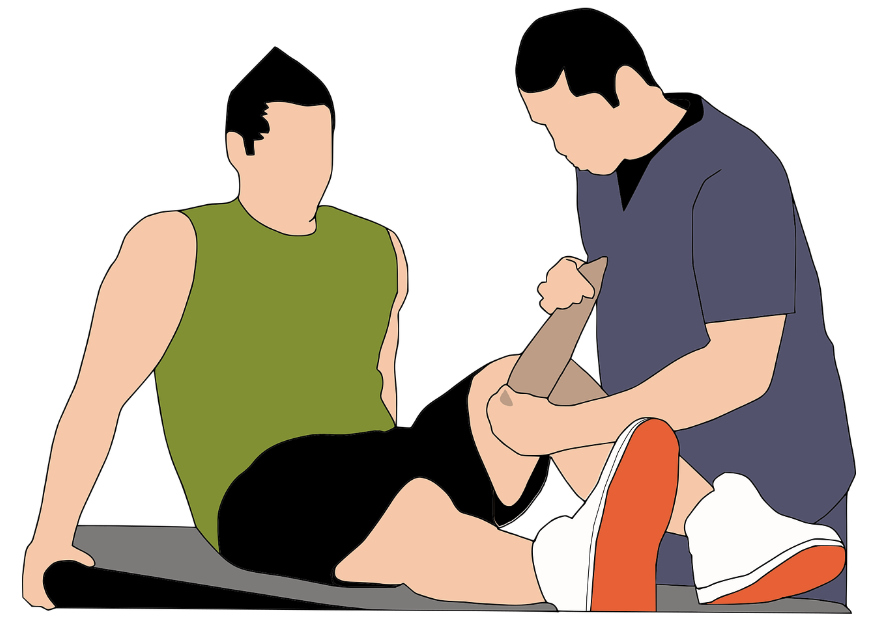The Rise of Sports Injuries Among Student Athletes
April 20, 2023
As I released my third pitch in an effort to strike out batter number three, I felt something in my shoulder twist. That twist was immediately followed by a sharp pain. I called a timeout and knew at that moment I was done for the season. In the months that followed I spent the majority of my free time in physical therapy. While there, I noticed the high proportion of teenagers in physical therapy as well. My physical therapist mentioned the increase in teenage patients, and that led me to look further into the matter.
What I discovered was that the Covid-19 pandemic made athletes more susceptible to injuries. Due to the break in active sport participation during the pandemic, athletes’ bodies were not prepared when they started playing again. As Dr. Nicole Belkin of New York-Presbyterian said in article titled How the Pandemic impacted sports related injuries, “we’ve seen an awful lot of stress fractures, shin splints, and shoulder and elbow injuries because of the lack of a gradual return to sports, less practice before the season, and overzealous practice schedules due to condensed preparation.” This sudden increase in sports activity has, unsurprisingly, led to an increase of sport-related injuries among highschoolers.
Players, coaches, and parents/guardians forget that players sometimes need breaks and muscle strengthening in order to effectively practice daily and play in many games. The lack of preconditioning and sustained workouts easily paves the way to overuse injuries.
The need for physical therapy is projected to grow 21% before 2030, which according to the US Bureau of Labor is “faster than the average growth rate across all US occupations.” This demand for physical therapists is directly linked to the uptick of sports injuries requiring physical therapy. Even while one is injured, many sports teams require athletes to attend practice and games for moral support.
Furthermore, between school, homework, and sports, student athletes have very busy schedules that rarely leave time for physical therapy. Depending on the severity of an injury, student athletes may need to attend PT anywhere from 1-3 times a week, along with daily exercises at home. I spoke to Dr. Daniel Jacobs, a physical therapist at ProClinix in Ardsley. When asked if he’s seen an increase in injuries among teenage clients, he simply responded with “absolutely.” He went on to say that most of the teenage injuries he sees are due to overuse, primarily shoulder and elbow ones from softball and baseball players.
While having obvious physical impacts, sport related injuries possess emotional ones as well. Several studies have found that sports-related injuries can cause negative emotional states, decreased self-esteem, and social isolation.
Around 4 million teenage athletes get injured every year, a number that keeps increasing . Over the last 4 years, injuries among highschoolers have increased by 150%. These injuries continue to increase 2% each year. For example, shoulder and elbow injuries have risen 500% in softball and baseball players, and the amount of ACL injuries have risen by 400%, according to KC chiropractic: “The Rise of Youth Sports Injuries.”
Aside from overuse and pandemic lull, a major contributing factor in the increase of sports injuries is the rise in the use of turf fields for practice — artificial grass materials that can cause athletes to trip and injure themselves. Turf fields have been found to have a 32% higher knee injury rate than grass, and a 69% higher foot/ankle injury rate. Why use turf? It is easier to maintain, replace, harder to scuff up than grass fields and, are cheaper. Thus, turf is appealing to many coaches, managers, schools, and club sports teams. It is also used so athletes can practice all year long as many teams train on indoor turf facilities in the offseason. As the need and use for turf fields rise, so will the injuries it causes.
Five months later, I am back on the field, and what did I learn? It’s not fun to sit out. I was in PT for shoulder and knee injuries, which required multiple days of PT per week, and I could not fully take part in the activities I enjoy. Now comes the hard part: maintenance. According to Dr. Jacobs, teenagers also can take longer to recover and easily re-injure themselves because they are not disciplined with conditioning and maintaining their PT at home. The fact is, over 50% of American teenagers play sports and 90% of them get injured in some way — an injury rate that has increased dramatically in the past few years. If we want to have healthy teams, we need to emphasize the importance of conditioning and taking injury recovery slow.



















Richard Davis • May 1, 2024 at 1:53 pm
Reporter from Canada researching a story about sports injuries to high school students, found this and it’s amazing work!
Tamara • Apr 21, 2023 at 12:57 pm
Great article! I learned a lot from this as a mom of a student athlete.
Michael C • Apr 21, 2023 at 11:45 am
A very well researched and presented article. Thanks!